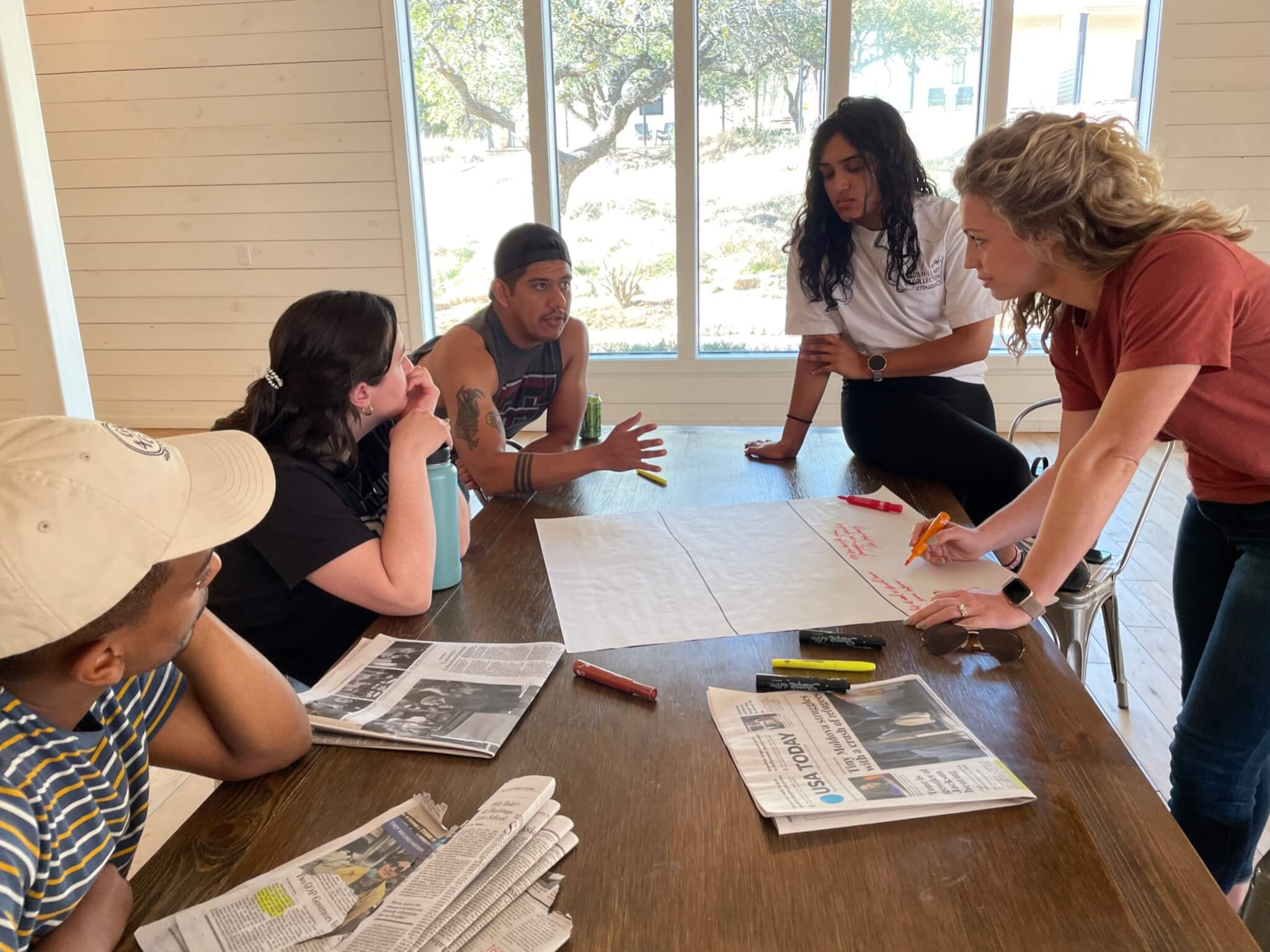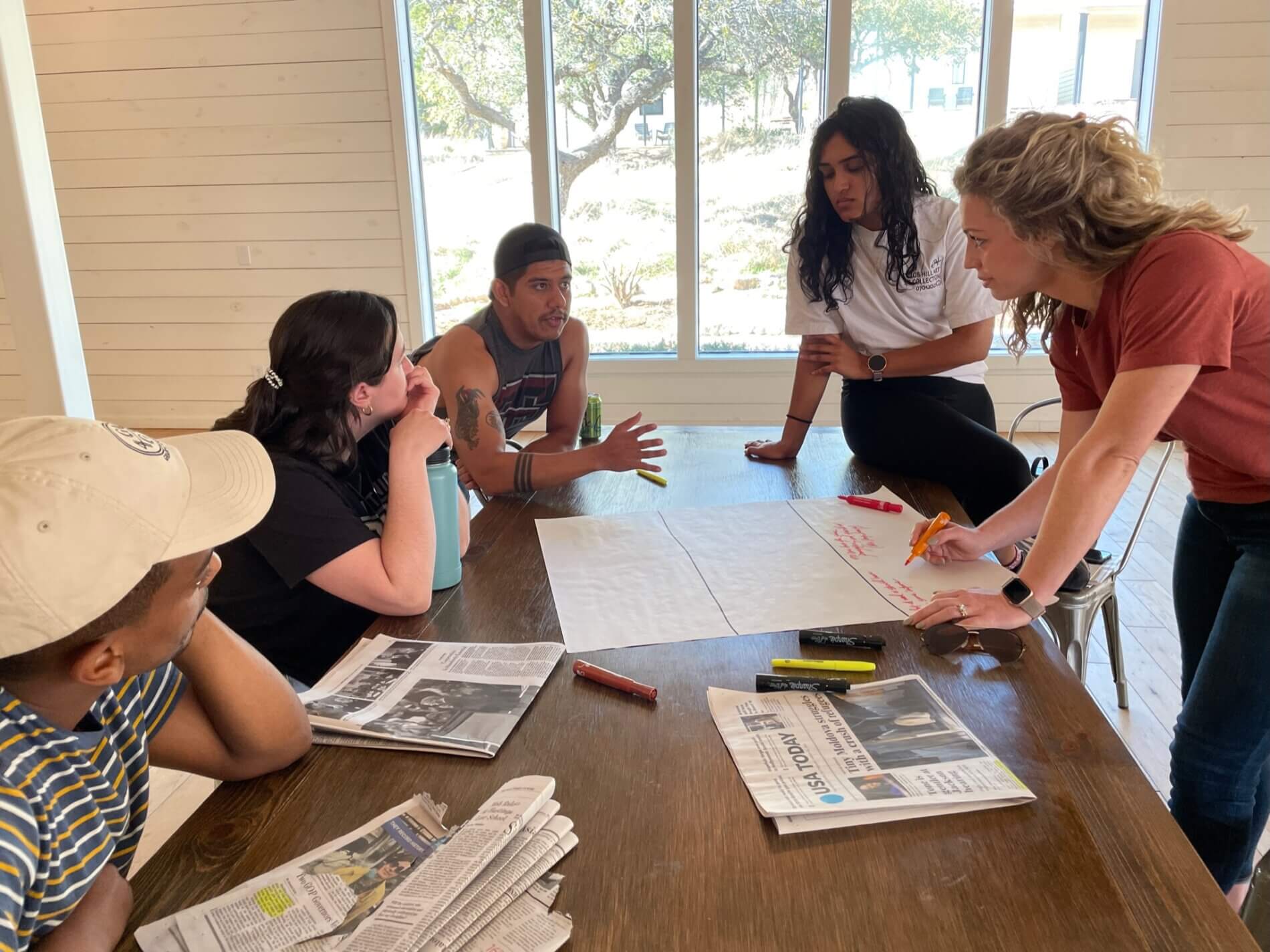

Here’s a tricky thing that happens a lot in our work:
We’ll tell a story about a San Antonio family experiencing economic hardship. We’ll take care to clarify the context of their challenge, especially local histories of development that have created some neighborhoods where families tend to flourish and other neighborhoods where families hit roadblocks at every turn.
We’ll show that many families in our city—nearly half!—are one bad month away from serious harm, even as they are working and striving to get ahead. We’ll explain why the ZIP code where a child is born is one of the most powerful predictors of how their life turns out.
Sometimes, people will say: Wow, I get it! And then: How can I help? They’ll be ready to leap to action.
That’s the tricky part.
A lot of our work involves slowing people down, not jumping to solutions thinking right away. We do that for two reasons. First, we know that if people are given immediate solutions, they might check a box and move on. Make a one-time donation. Volunteer for a charity event or two.
That’s not what we’re after. We believe that continual curiosity and ongoing engagement are keys to taking on the challenge of economic segregation in San Antonio. We also believe—as studies show—that relationships are the real secret sauce to overcoming the social structures of poverty. If we’re going to tackle big problems, we have to get proximate.
We called this program “Know Your Neighbor” because we wanted the solution we’re driving at to be right in the name. But you can’t know your neighbor by jumping to action too quickly. You have to listen. Meet people. Get to know their stories. See context.
But even for people who do stay engaged, the problem remains: What can any one of us do about large-scale problems like local poverty and economic segregation? What can any one of us do about our housing affordability challenges? Troubled schools? The gap in wealth and health that runs along racial and residential lines?
The truth is that there are many ways to get involved. We’ll share more and more over time.
But for starters, here is a four-part plan for anyone looking to bridge San Antonio’s economic and cultural gaps.
Commit to building knowledge and understanding as a regular and ongoing practice in your life. You can do this with your brain—we’re constantly recommending articles, books, podcasts, and videos in our newsletter. You can also do it with your body—exploring your city by visiting restaurants and parks and churches and libraries and so on in neighborhoods from other parts of town.
Get to know all of San Antonio. Stay tuned with Know Your Neighbor, and we’ll help. Also, check out our Narrative Change Cohorts to consider committing to 15 months of learning alongside other San Antonians.
Learn to talk to your friends and family about why you care about local poverty and inequity. It takes practice. And it can take courage. But as you learn, practice talking about what you’re learning. You don’t have to berate people or be a bore. Just share what you’re learning—at work, school, church, at family dinner, wherever you can. If you talk about these things, you’ll plant seeds of curiosity in others.
Need a place to practice? Sign up for our events like Third Thursdays and Shared Tables.
Often, the best place to start is the place where your own story, life experiences, and expertise meet up with local challenges. Nonprofits and community groups can find plenty of general volunteers. But they may need someone exactly like you, with your unique talents and background mix of experiences.
Talk to local nonprofit leaders. Talk to community advocates. (Again, Know Your Neighbor events are a great place to meet them!) Find out where you fit and can be most effective.
San Antonio has incredible, effective nonprofits on the front lines of poverty and economic segregation. Don’t underestimate the value of investing in them every month for the rest of your life.
Choose a well-run local nonprofit and give to it repeatedly for years. You might think of it like compound interest. You can do a lot of good by finding a local, community-based nonprofit that is doing good work and supporting that work regularly for years on end.
Need a list of strong nonprofits? One place to start is with this list of nonprofit cohorts who have gone through the H. E. Butt Foundation’s capacity-building program. We’ll also be pointing to others along the way in Know Your Neighbor.
And look—even though I mentioned Know Your Neighbor in each of the four steps above, it’s not like we think we have all the answers here. We’re learning just as you are. But we’re also determined to create good handholds for anyone ready to start the climb into addressing our city’s deep economic segregation.
There’s much more, of course. You can serve on local boards. You can join collective action through community groups that are organizing to protect their neighborhoods. There are many ways to commit to long-term interventions in these long-term challenges.
But start here: Stay curious. Talk to friends and family. Find a match for your time and talents. Give locally and long-term. If we all keep taking those four steps, we’ll find our footing for the longer work of real change.